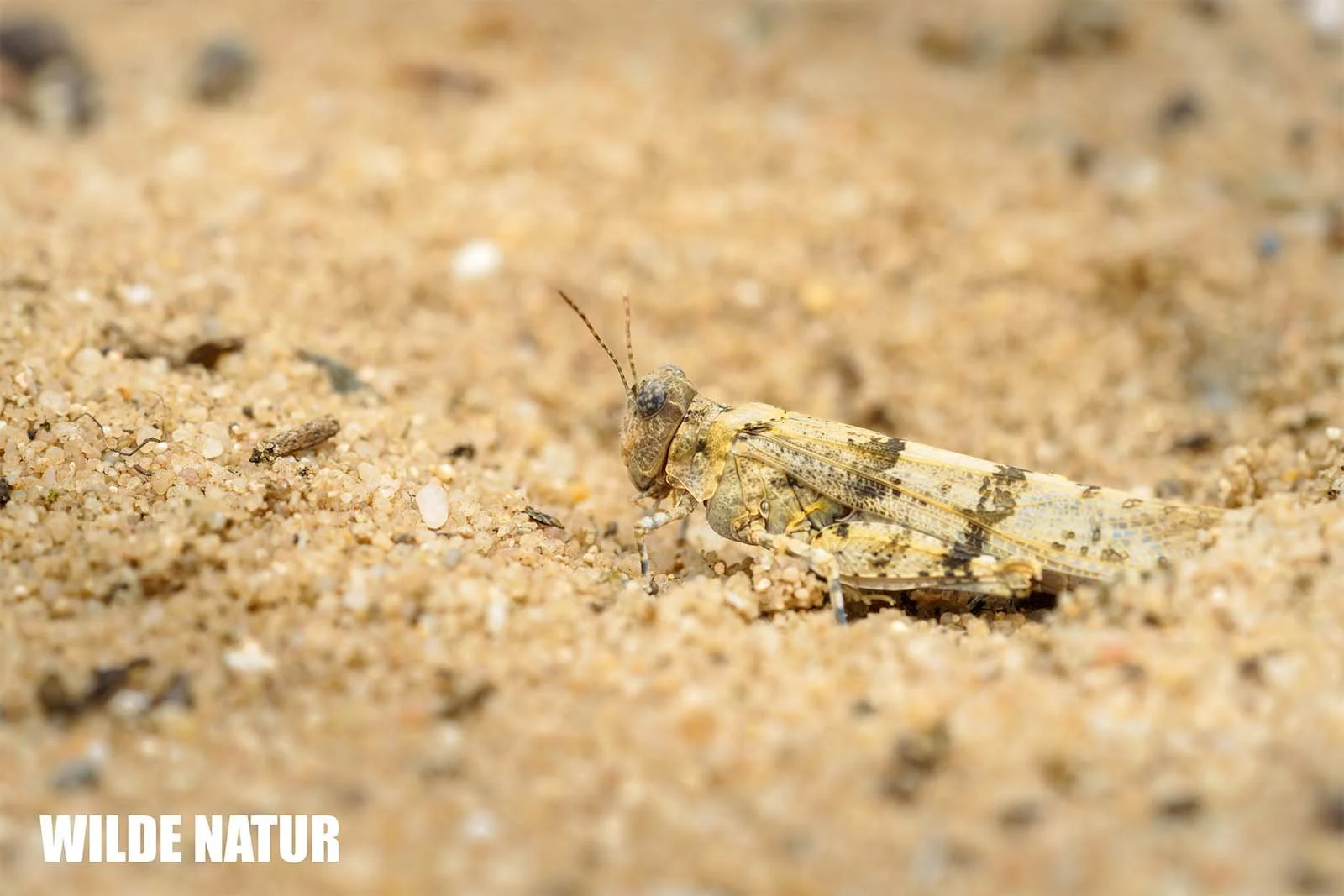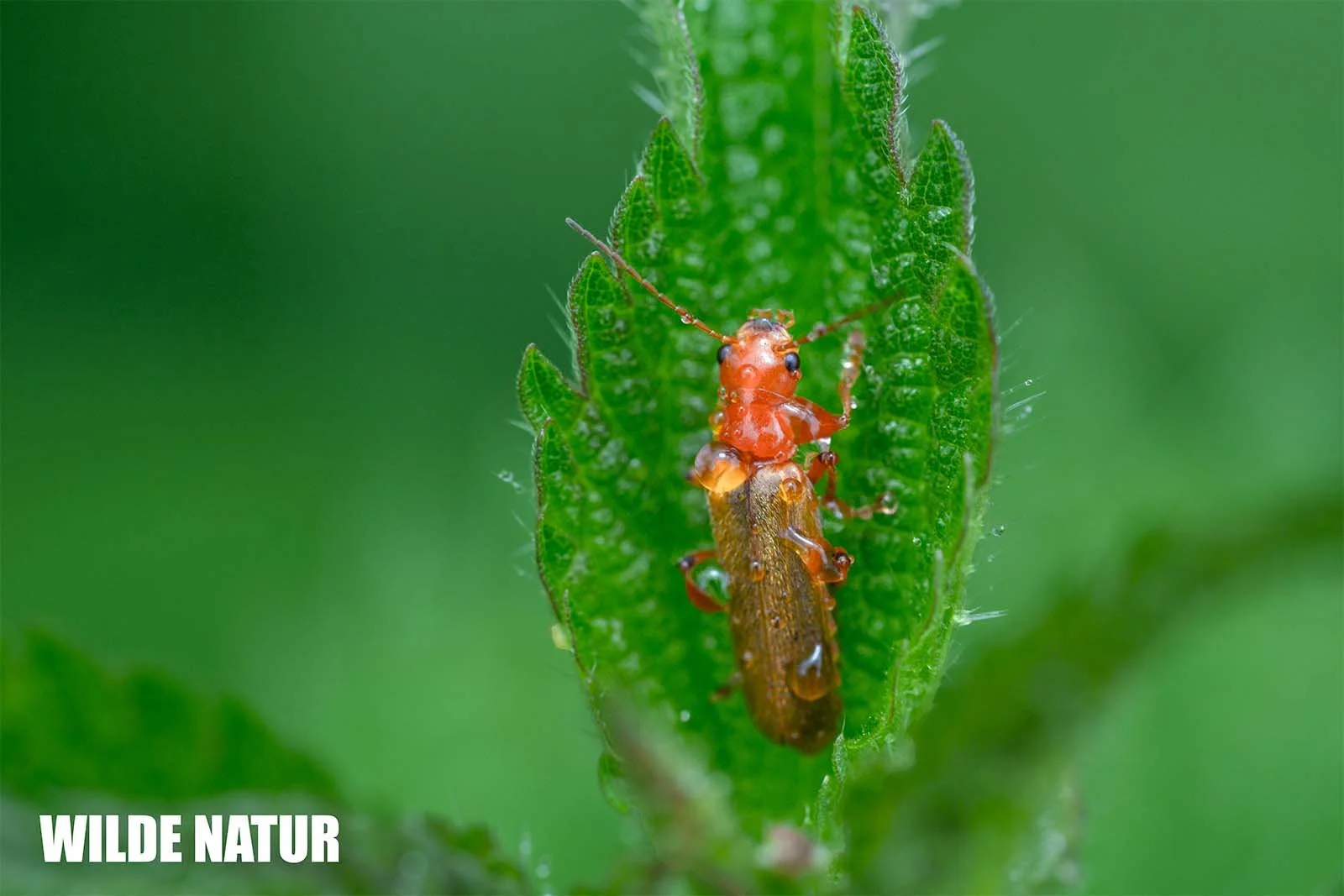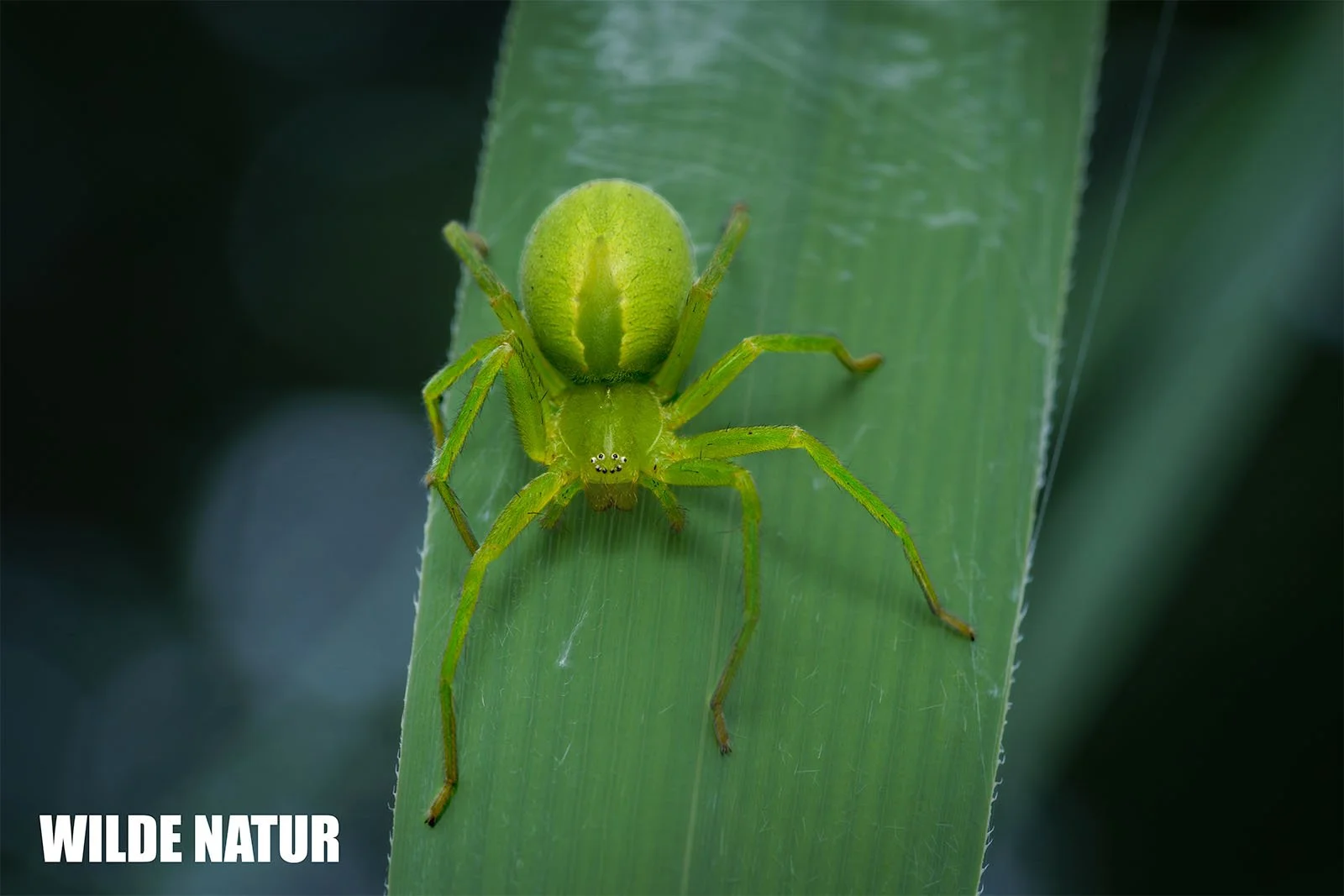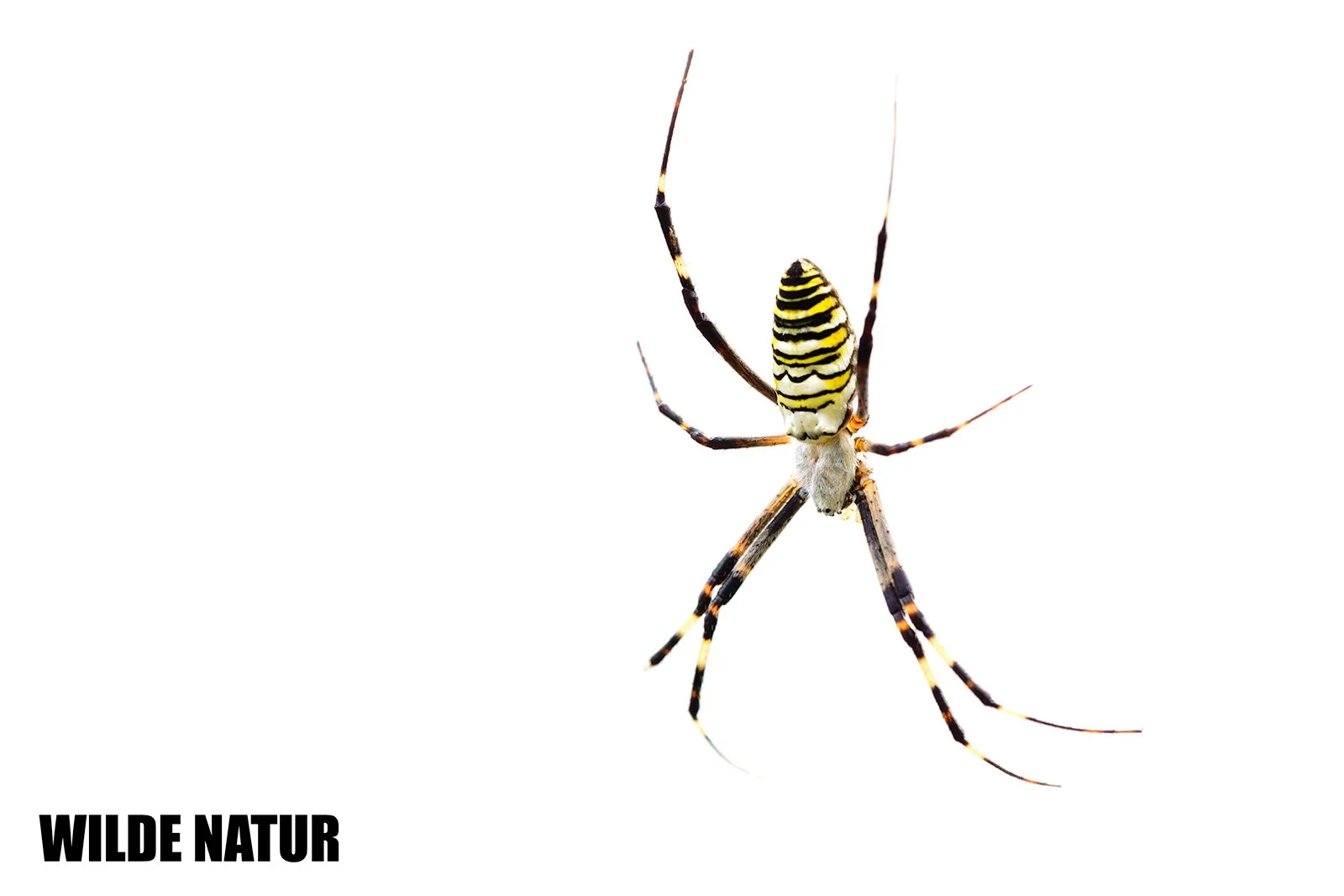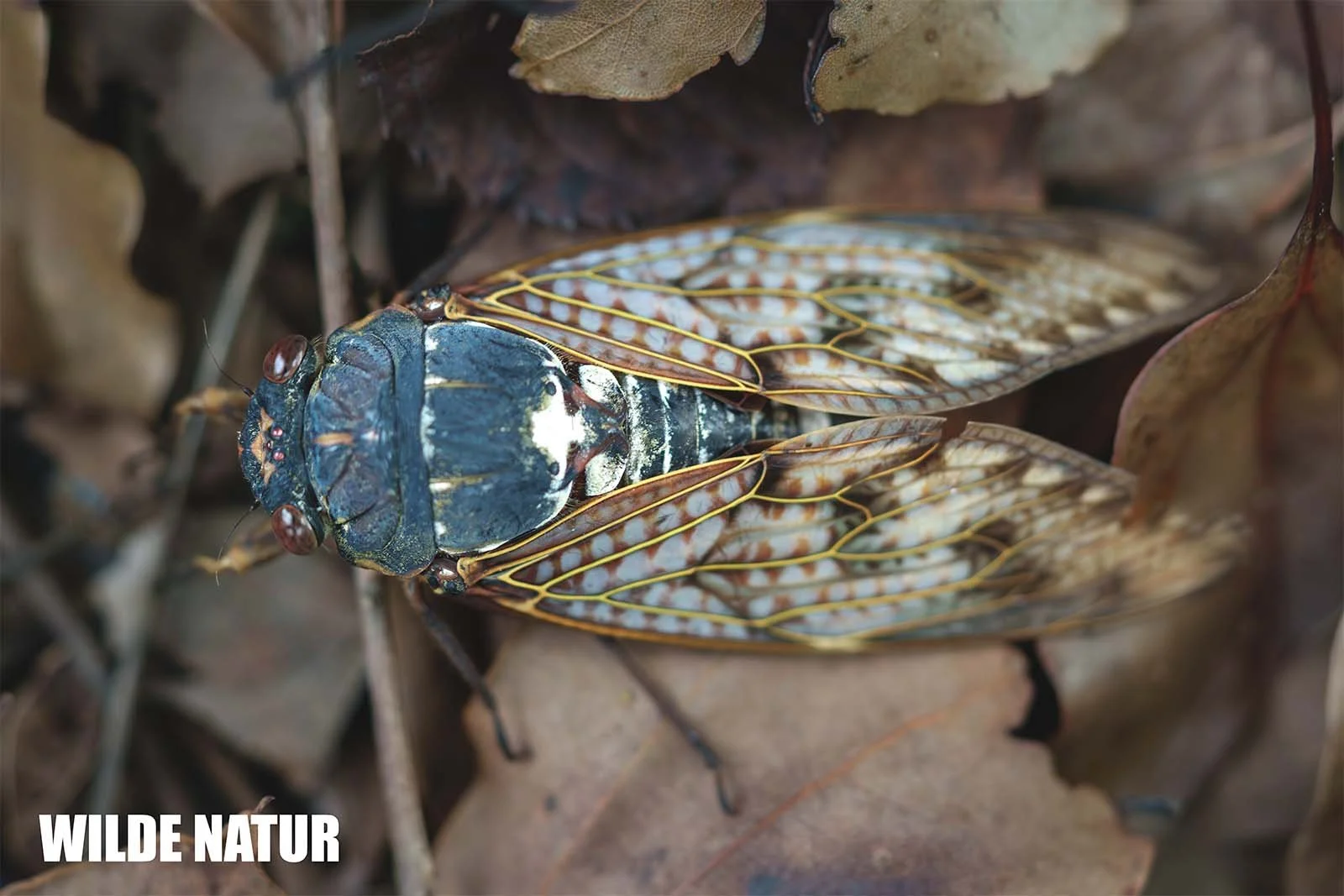Blue-winged grasshopper (Oedipoda caerulescens)
Blue-winged grasshopper (Oedipoda caerulescens)
Blue-winged Grasshopper: A Master of Camouflage
Blue-winged grasshopper (Oedipoda caerulescens): characteristics, behavior, distribution & conservation status of this striking grasshopper species.
- Size: Males 13–23 mm, females 20–29 mm
- Key feature: Bright blue hindwings with a black transverse band
- Diet: Grasses, herbaceous plants, occasionally carrion
- Active period: Adults July to October
- Distribution: Europe, North Africa, Asia; mainly southern/eastern Germany
- Habitat: Dry open areas such as dry grasslands, gravel pits, quarries
- Conservation status: On early warning list in parts of Germany; "Near Threatened" in Austria
Key Facts
- Body size: Males 13–23 mm, females 20–29 mm
- Coloration: Pale grey to almost black, often yellowish or reddish
- Hindwings: Turquoise blue with a black band
- Legs: Strong hind legs with a distinctive notch
- Diet: Primarily grasses, herbaceous plants
- Annual cycle: Egg → nymph (spring) → adult (July–October)
- Distribution: Europe to North Africa and Asia; prefers dry, open habitats
Table of Contents
- Introduction
- Appearance and Characteristics
- Diet and Lifestyle
- Reproduction and Life Cycle
- Seasonal Activity
- Habitat and Distribution
- FAQ
- Conclusion
Introduction
If you’ve ever wandered through sunbaked gravel pits or sparse dry grasslands in midsummer, you may have only noticed them when they suddenly take flight: the blue-winged grasshopper. Nearly invisible when at rest, it reveals a dazzling flash of blue in flight. This remarkable grasshopper is a true master of camouflage and adaptation. In this article, you’ll discover everything about its appearance, behavior, and ecological role.
Appearance and Characteristics
At first glance, the blue-winged grasshopper seems rather inconspicuous. Its compact body with a sturdy thorax and slender abdomen blends perfectly with dry, barren ground—ranging in color from pale grey and ochre to reddish brown or nearly black.
The forewings are subtly patterned with 2–3 broad dark bands. Its most striking feature, however, is only revealed in flight:
vivid turquoise hindwings with a bold black transverse band.
Additional features:
- Size: Males 13–23 mm, females 20–29 mm
- Hind legs: robust, with a characteristic notch in the upper section
- Sound: minimal—short chirping before mating, occasional mandibular sounds
Diet and Lifestyle
These grasshoppers feed primarily on grasses and display little dietary specialization.
In their typical dry open habitats, they also consume:
- herbaceous plants
- occasionally observed feeding on carrion
Feeding typically occurs in the early morning or late afternoon, when temperatures are more favorable.
Reproduction and Life Cycle
The reproductive cycle follows several distinct phases:
- Egg-laying: Females deposit eggs in dry soil.
- Overwintering: Eggs remain dormant through the winter.
- Nymph stage: Nymphs hatch in spring.
- Males pass through about four stages
- Females through five stages
- Adult stage: After the final molt, adults are active from July to October.
Seasonal Activity
The species shows strong seasonal patterns:
- Winter: Eggs in the soil
- Spring & early summer: Nymph development
- Summer & autumn: Active adults
Camouflage and escape behavior:
- At rest: flattened against the ground, perfectly camouflaged
- When threatened: sudden leap + spectacular blue-winged flight
- Upon landing: quick "freeze" behavior (the so-called hook trick) to confuse predators
Habitat and Distribution
The blue-winged grasshopper favors extremely dry, sparsely vegetated open areas:
- Dry grasslands
- Sand and gravel pits
- Quarries
- Railway embankments
- Spoil heaps and track ballast
In Germany, the species is most commonly found in the south and east; it is rarer in the northwest.
Overall distribution:
- Europe (extending into northern Germany)
- North Africa
- Asia
Conservation status:
- In Germany: on the early warning list
- In Austria: listed as Near Threatened (NT)
FAQ
How big is the blue-winged grasshopper?
Males measure 13–23 mm, females 20–29 mm.
When are they active?
Adults are active from July to October.
How do you recognize the species in flight?
By its turquoise hindwings with a distinctive black transverse band.
Where can I find the blue-winged grasshopper?
In dry, open habitats: dry grasslands, quarries, gravel pits.
Is the species at risk?
In Germany it is on the early warning list; in Austria, classified as Near Threatened.
Conclusion
The blue-winged grasshopper is a fascinating example of adaptation and camouflage. Its striking flight display contrasts sharply with its perfect ground mimicry when at rest. Thriving in barren open landscapes, it also serves as an indicator of the conservation value of these habitats. Once you’ve consciously observed one, you’ll see these subtle beauties of our native fauna with fresh eyes.

